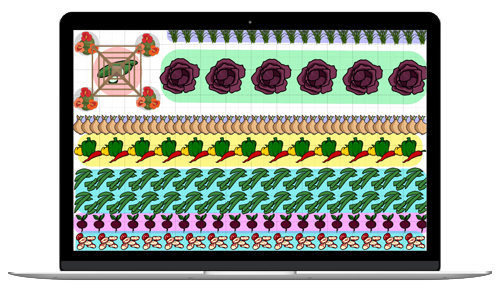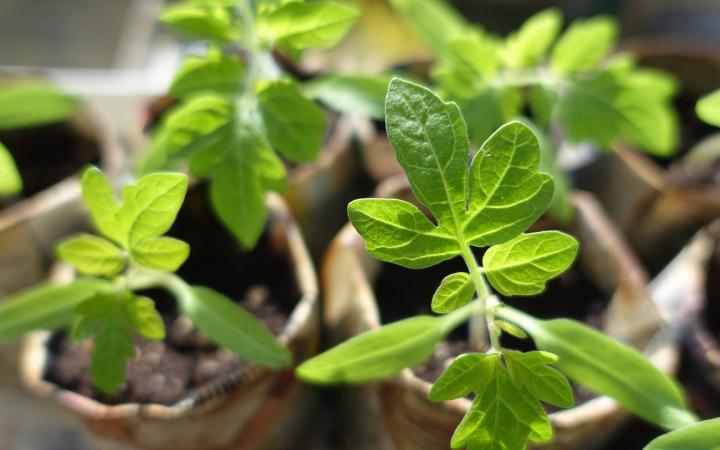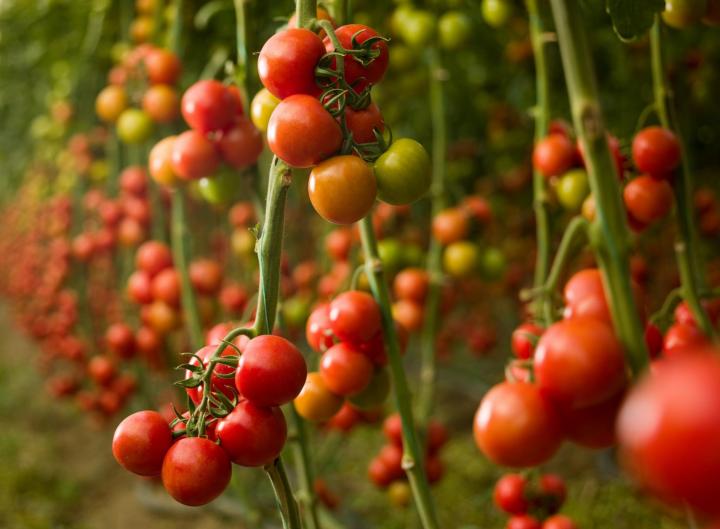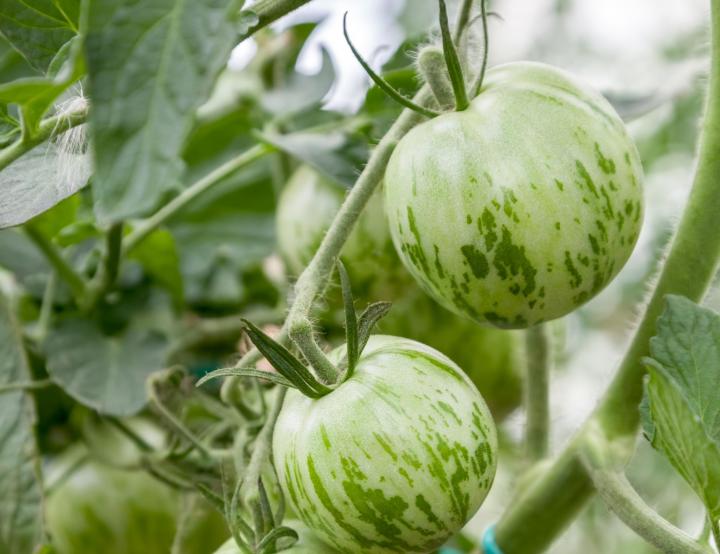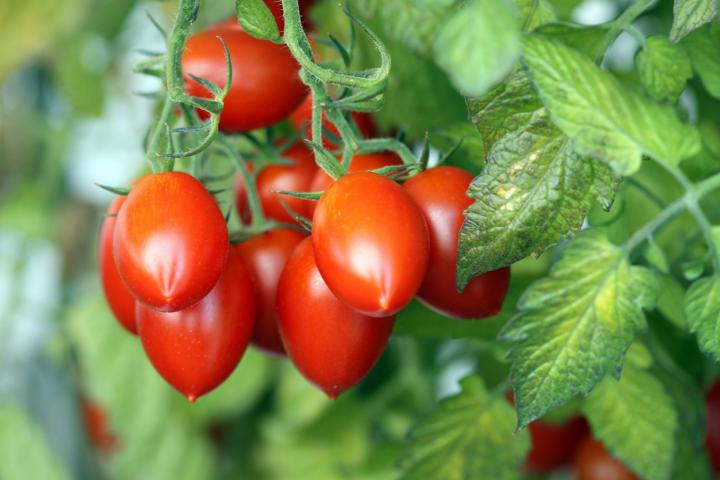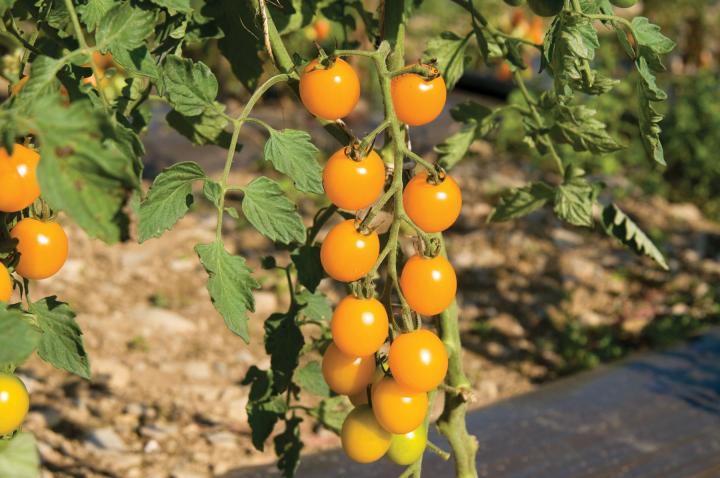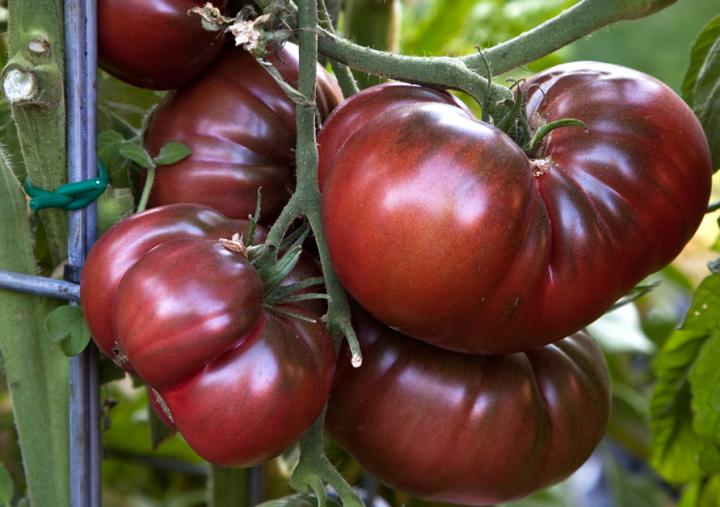
Planting, Growing, and Harvesting Tomatoes
The Almanac Garden Planner - Use It Free for 7 Days!
Plan your 2025 garden with our award-winning Garden Planner.
Cooking Notes
- Tomatoes are nutritious and low in calories. One medium-sized tomato provides 57% of the recommended daily allotment (RDA) of vitamin C, 25% of vitamin A, and 8% of iron, yet it has only 35 calories.
- Preserve your harvest to enjoy all year long by canning tomatoes or drying tomatoes.
ADVERTISEMENT
I've tried Early Girls a few times, as an attempt to get some tomatoes sooner than the big beefsteaks my spouse prefers. Every time, I get a couple of branches that produce cherry tomatoes! and once the cherry-sized tomatoes start up, the rest of the plant doesn't work as hard. I give up, I'm going to stick with beefsteak types.
Oh, and paste/Romas - these are great to have in the freezer. Core them and freeze them whole, take out of the bag when you need them, hold under running water and the peel slips right off. Then straight into the pot, mash 'em up later.
What caused leaf curl at new growth on top of my tomato plants?
You're missing "Ramapo". A classic Jersey tomato with that great old time flavor that was reintroduced by Rutgers University a few years ago. I've grown them in NH for 3 years now. They're a heavy producer, large size great for slicing. Gardening and growing tomatoes for well over 50 years, Ramapo is the best I have ever run across. Beats anything out there!
I have started 3 tomato plants in containers inside my house. They are now 18" in height but have very few branches. Is this normal?
Tomatoes are sun and heat lovers. They need at least 8 hours of direct sunlight per day PLUS a surrounding temperature of around 70 degrees Fahrenheit or higher.
The tomatoes may fail to produce more branches while growing tall due to lack of enough sunlight. Adequate sunlight is very useful for it's growth.
My big new tomatoes (still green) are getting holes (bugs) can I save them, I don't see any bugs, very frustrating
Hi Danielle, We are sorry to hear about the issues with your tomato crop. It must be quite frustrating, especially since you can not see what is causing the holes. Some of the more common pests are the tomato fruitworm and tomato hornworm. Whatever is creating the holes in your tomatoes is likely causing damage and promoting decay to the inside of the fruit as well. It is best to get rid of the severely affected tomatoes and then keep a watchful eye for pests in an attempt to salvage what remains of your crop.
I sliced open an over ripe tomato and it was filled with sprouted seeds. I scooped them out and put them in an inch of potting soil. I now have a forest of 2 inch tall seedlings. Will they produce the same kind of tomatoes as the tomato they came in?
Cheryel,
If it was an heirloom variety it should. If it was a store bought variety it in all probability will not produce anything like what you had, if it produces anything at all. Store bought tomatoes are genetically modified to the point where growers have to buy new plants each year. They do not save seeds as they cannot grow plants from those tomatoes that they grow. I grow heirloom tomatoes simply for the fact that I can save seeds plus I get much better tasting fruit. I took a 2 day seminar in commercial hot house tomato growing and learned of this from the seminar. I don't like genetically modified produce for this, and other reasons. Before I started growing my own tomatoes and had to buy store bought fruit I have had tomato seedlings growing in my compost and tried growing plants just to see what happens and none of them have produced fruit.
I hope this helps.
Mr. Mike

